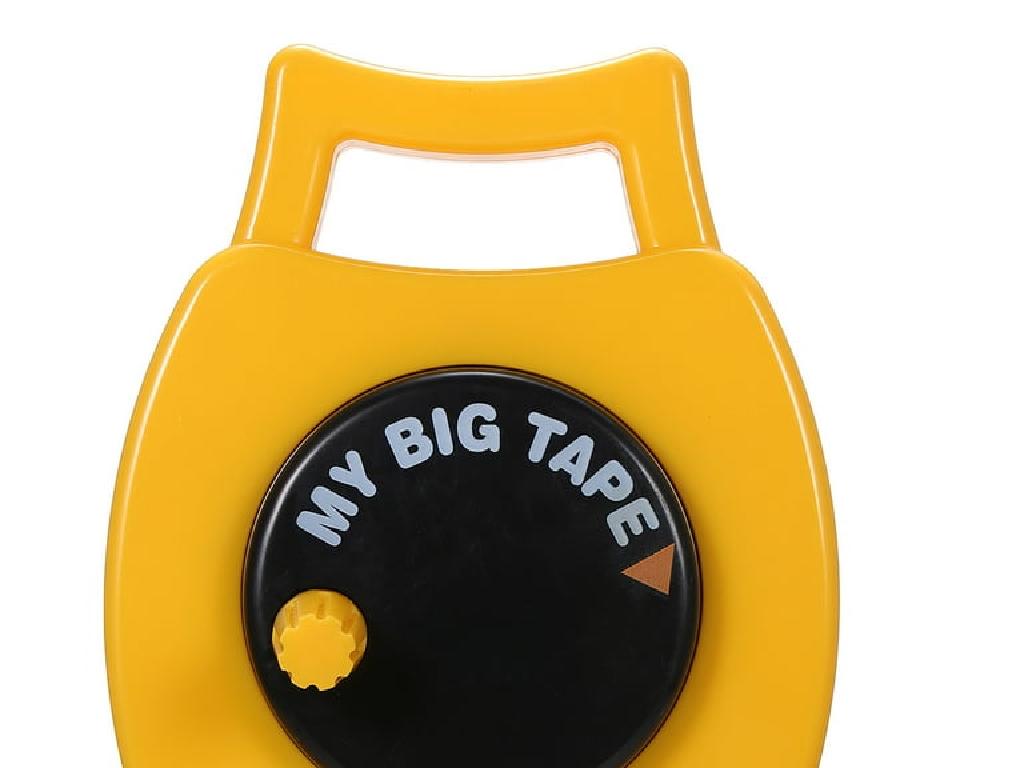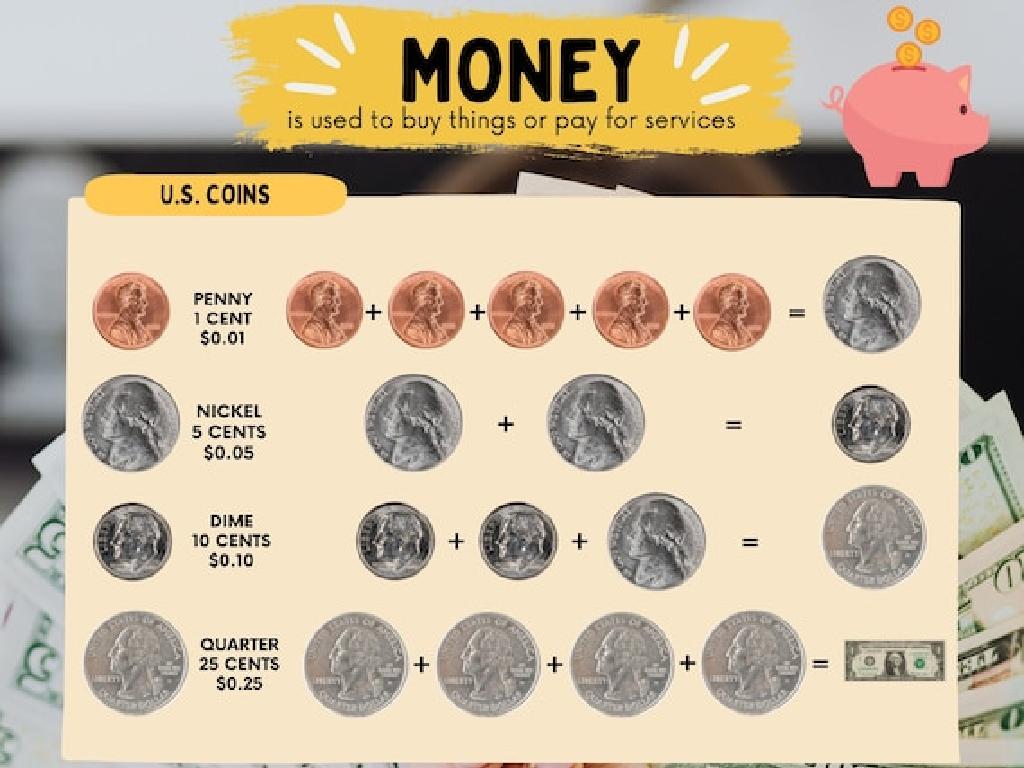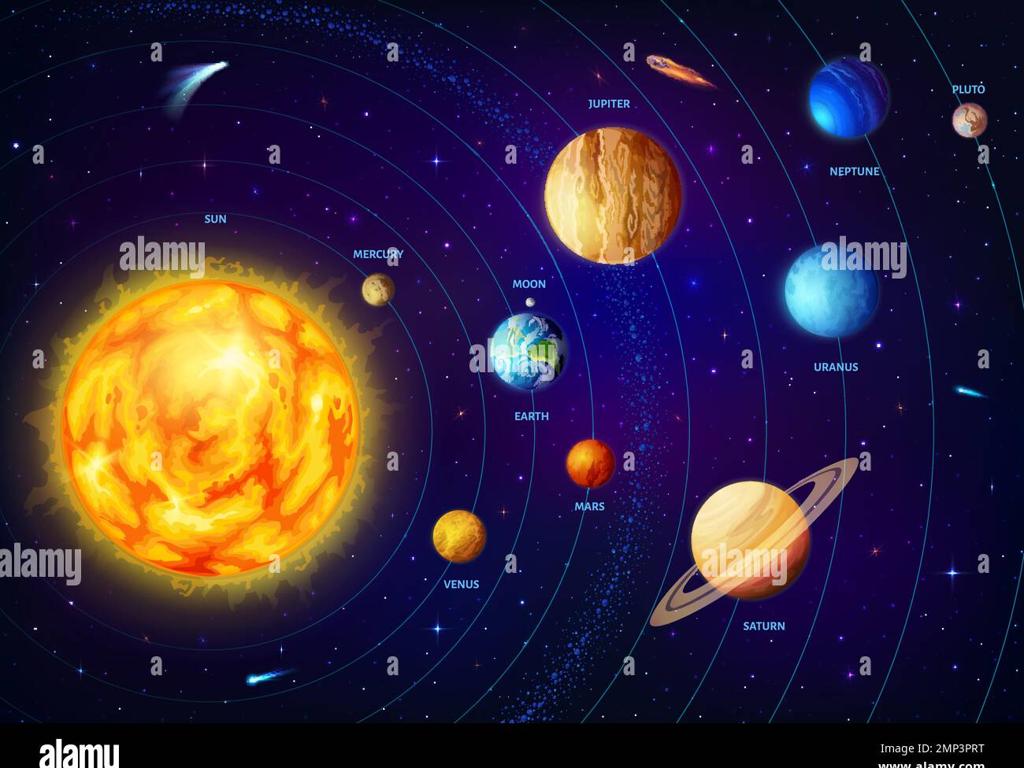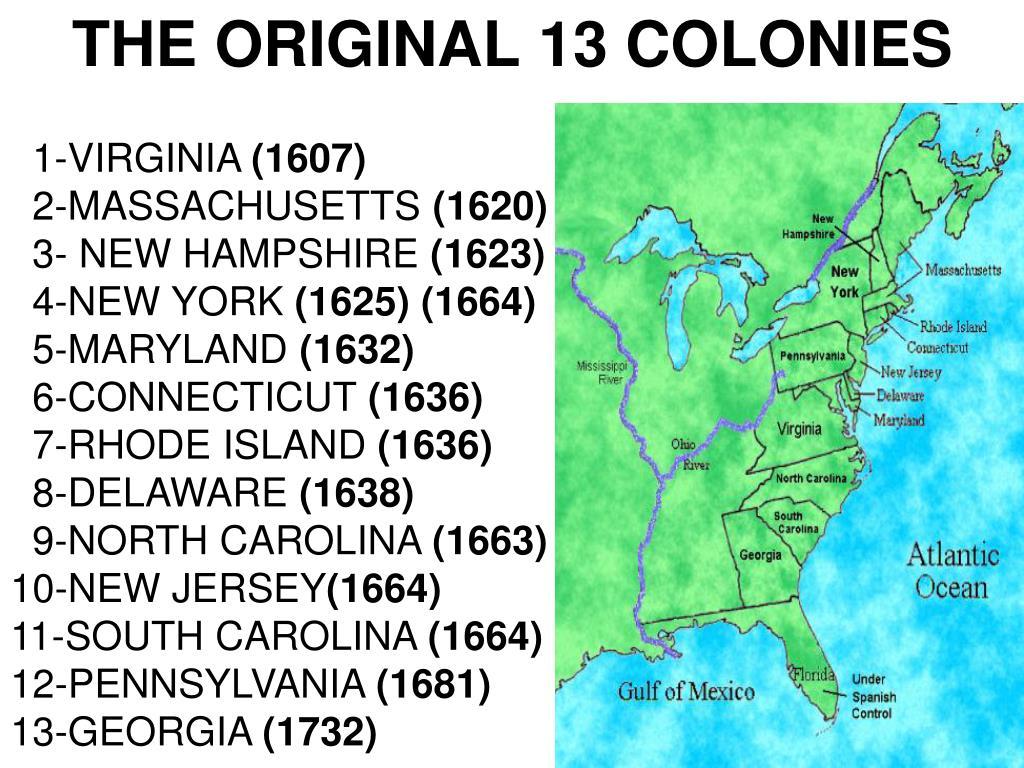Reflections: Graph The Image
Subject: Math
Grade: Eighth grade
Topic: Transformations And Congruence
Please LOG IN to download the presentation. Access is available to registered users only.
View More Content
Reflections: Graph the Image
– Exploring transformations
– Today’s focus: Reflections
– A reflection flips a figure over a line, creating a mirror image.
– Reflections and world symmetry
– Natural symmetry: butterfly wings, human faces. Man-made: letters, logos.
– Graphing reflections practice
– Use graph paper to reflect shapes across lines like the x-axis or y-axis.
|
This slide introduces the concept of transformations with a focus on reflections, which are a type of transformation that flips a figure over a line, creating a mirror image. This concept is related to symmetry, which is often observed in the natural and man-made world, such as in butterfly wings or logos. Encourage students to think of examples of symmetry that they encounter in their daily lives. The practice activity will involve graphing reflections on graph paper, which will help students visualize the concept of reflections and understand how to apply it mathematically. Provide step-by-step guidance on how to reflect points and shapes across lines such as the x-axis or y-axis.
Understanding Reflections in Geometry
– Define geometric reflection
– A flip over a line where the figure is the same distance from the line on the opposite side.
– Reflection vs. Mirror Image
– Comparing geometric reflection to looking in a mirror, where left becomes right and vice versa.
– Properties of reflections
– Distances are preserved, but the orientation (left/right) is reversed in a reflection.
– Reflections in coordinate plane
– Using the x-axis or y-axis as the ‘mirror line’, points are reflected across to a new position.
|
This slide introduces the concept of reflection in geometry, which is a type of transformation where a figure is flipped across a line, creating a mirror image. It’s crucial to differentiate between a literal mirror image and a geometric reflection, as students often confuse the two. Emphasize that in reflections, distances from the ‘mirror line’ remain the same, but the orientation is reversed. Show how to reflect points and shapes across the axes on a coordinate plane, maintaining equal distance but flipping the orientation. Use graph paper or interactive tools to demonstrate reflections in real-time, and encourage students to practice with various shapes and lines of reflection.
Identifying the Line of Reflection
– Understanding the Mirror Line
– The line over which a figure is flipped to create a mirror image
– Finding the Line of Reflection
– To find it, look for equidistant points on the figure and its image
– Reflection over the x-axis
– Flip the figure over the x-axis; points (x, y) become (x, -y)
– Reflection over the y-axis
– Flip the figure over the y-axis; points (x, y) become (-x, y)
|
This slide introduces the concept of the line of reflection in the context of geometric transformations. The mirror line is a fundamental element in understanding reflections as it is the axis over which the figure is flipped to produce a mirror image. Students should learn how to determine this line by finding points that are equidistant from the figure and its reflected image. Provide examples of reflections over the x-axis and y-axis, which are common lines of reflection. For the x-axis, all y-coordinates change sign, while for the y-axis, all x-coordinates change sign. Encourage students to practice by drawing reflections of various shapes over different lines and to understand the changes in coordinates that occur during these reflections.
Graphing Reflections of Shapes
– Plot points for shape reflection
– Use graph paper to accurately plot and reflect shapes
– Rules for x-axis and y-axis reflection
– For x-axis: (x, y) becomes (x, -y), for y-axis: (x, y) becomes (-x, y)
– Reflect triangle over y-axis
– Example: Triangle vertices A(2,3), B(2,5), C(5,3) reflected to A'(-2,3), B'(-2,5), C'(-5,3)
– Discuss reflection properties
|
This slide introduces students to the concept of reflecting shapes on a coordinate plane. Start by explaining how to plot the original points of a shape. Then, discuss the specific rules that apply when reflecting shapes over the x-axis and y-axis. Provide a practice example by reflecting a triangle over the y-axis, showing the change in coordinates for each vertex. Emphasize that the reflected shape is congruent to the original and maintains the same size and angle measures. Encourage students to practice with additional shapes and to observe the properties of reflections.
Reflections in the Coordinate Plane
– Plotting points before reflection
– Use graph paper to mark original coordinates
– Algebraic reflection over a line
– Apply the formula (x, y) (-x, y) for reflection over the y-axis
– Reflecting a quadrilateral interactively
– Use a digital tool to reflect a shape and observe changes
– Understanding reflection symmetry
– Identify shapes with two halves that are mirror images
|
This slide introduces the concept of reflection in the coordinate plane, a key component of understanding transformations in geometry. Start by explaining how to plot the original coordinates of a point or shape on graph paper. Then, demonstrate how to use algebraic rules to reflect points over a line, such as the y-axis or x-axis, by changing the sign of the x or y coordinates respectively. Provide an interactive example, such as reflecting a quadrilateral, to help students visualize the transformation. Finally, discuss the concept of reflection symmetry, where one half of the shape is a mirror image of the other. Encourage students to practice with different shapes and lines of reflection to solidify their understanding.
Real-life Applications of Reflections
– Reflections in nature
– Examples: water reflections, butterfly wings
– Symmetry in design
– Architectural symmetry: buildings, monuments
– Reflections in technology
– Use in optical devices like cameras, telescopes
– Engineering applications
– Structural integrity and stress testing
|
This slide explores the concept of reflections beyond the classroom, highlighting how they appear in various aspects of the real world. Students will see how reflections are not just a mathematical concept but are observable in nature, such as the mirror images on water surfaces or the symmetrical patterns on butterfly wings. The role of symmetry in design and architecture is evident in the balanced proportions of buildings and monuments. In technology, reflections are crucial in the functioning of cameras and telescopes, which use mirrors to direct light. Engineering uses reflections principles to ensure structures can handle stress and maintain integrity. Encourage students to find other examples of reflections in their surroundings and discuss how the principles they learn in class apply to these real-life scenarios.
Class Activity: Let’s Reflect!
– Pair up for reflection worksheet
– Graph shapes on graph paper
– Ensure accuracy in reflecting the given shapes across the axis
– Share results with the class
– Discuss any challenges faced
– Talk about difficulties in plotting or understanding reflections
|
This activity is designed to reinforce the concept of reflections in geometry. Students should pair up to encourage collaboration and peer learning. Provide each pair with a worksheet that includes various shapes and lines of reflection. Students will use graph paper to ensure precision when graphing the reflected images. After completing the activity, each pair will share their graphs with the class, fostering a discussion about the process and any difficulties encountered. As a teacher, be prepared to guide the discussion, clarify misconceptions, and highlight the importance of accuracy in reflections. Possible challenges to discuss may include understanding the orientation of the reflected shape and maintaining proportionality. This activity will help students visualize and understand the concept of reflections in a hands-on manner.
Reflections Quiz: Test Your Knowledge
– Quick quiz on reflections
– 5 questions to assess skills
– Review answers post-quiz
– Discuss each question and correct answers
– Clarify any misconceptions
– Address common errors and clarify concepts
|
This slide introduces a quick quiz designed to assess students’ understanding of reflections in the context of transformations and congruence. The quiz consists of 5 questions that cover the key concepts of reflections. After the quiz, there will be a review session where students can go over their answers. This is an opportunity to clarify any misconceptions and reinforce learning. Teachers should prepare to explain common mistakes and ensure that students understand the reflection process, including the properties of reflected shapes and how to graph them accurately on a coordinate plane.
Wrapping Up: Reflections and Looking Ahead
– Recap: Reflections in Math
– Homework: Draw real-life reflections
– Find objects, like a spoon or a car, and sketch their reflections.
– Upcoming: Rotations in the Coordinate Plane
– We’ll explore how to rotate shapes on a graph.
– Prepare for next class’s topic
|
As we conclude today’s lesson on reflections, ensure students have grasped the concept of mirror images in math. For homework, they should observe and draw reflections of everyday objects to reinforce their understanding. This practical exercise will help them visualize reflections in a real-world context. Looking ahead, students should be prepared to delve into rotations, another type of transformation in the coordinate plane. Encourage them to start thinking about how shapes can be rotated and what that looks like on a graph. This will set a solid foundation for the next lesson.





